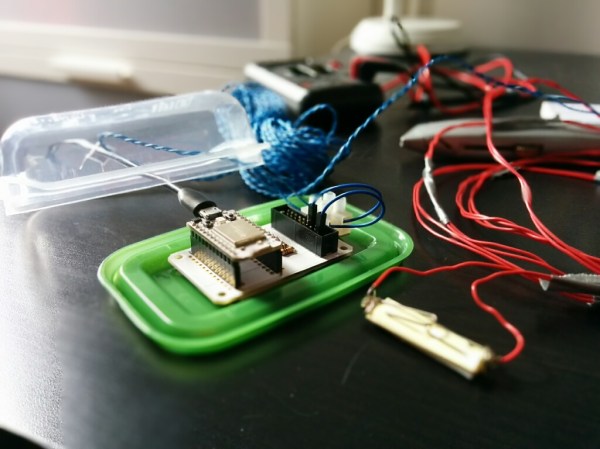When the first two prototype ingredients listed are paperclips and Post-it notes you know it’s going to be good. The problem: one shower stall at work with numerous co-workers who bike to the office. The solution: a occupancy monitor that is smart enough to know that someone is actually in the room. You know what we’re talking about, a sensor that knows more than whether the door is open or closed. [James] got wise and built a sensor to monitor whether the door is bolted or not. We think this method is far superior to motion-based systems.
This uber-smart sensor is simply a pair of paperclips anchored on a rolled Post-it note substrate and shoved in the receiver on the door jamb. When the bolt is locked from the inside it pushes the paperclips together completing the simple circuit. This is monitored by a Spark Core but will work with just about any monitoring system you can devise. What we’re trying to figure out is how to ruggedize the paper-clip hack which we can’t think will perform well for very long. It looks like there’s room to bore out a bit more inside the receiver hole. Perhaps leaf switch with a 3D printed mounting bracket?
Oh, and kudos on the Ikea food storage container for the enclosure. That’s one of our favorite tricks for hacks which are installed for the long-run.



 [kigster] began work on BORAT: Bathroom Occupancy Remote Awareness Technology. The initial problem was detecting bathroom occupancy. The easiest method would be to use door locks with embedded switches, much those used in aircraft. Unfortunately, modifying or changing the locks in a rented office space is a big no-no. Several other human detection systems were suggested and rejected. The final solution was a hybrid. Sonar, Passive Infrared (PIR), and light sensors work in concert to detect if a person is in the bathroom. While we think the final “observer unit” is rather cool looking, we’re sure unsuspecting visitors to the office may be wondering why a two eyed robot is staring at them on the throne.
[kigster] began work on BORAT: Bathroom Occupancy Remote Awareness Technology. The initial problem was detecting bathroom occupancy. The easiest method would be to use door locks with embedded switches, much those used in aircraft. Unfortunately, modifying or changing the locks in a rented office space is a big no-no. Several other human detection systems were suggested and rejected. The final solution was a hybrid. Sonar, Passive Infrared (PIR), and light sensors work in concert to detect if a person is in the bathroom. While we think the final “observer unit” is rather cool looking, we’re sure unsuspecting visitors to the office may be wondering why a two eyed robot is staring at them on the throne.








